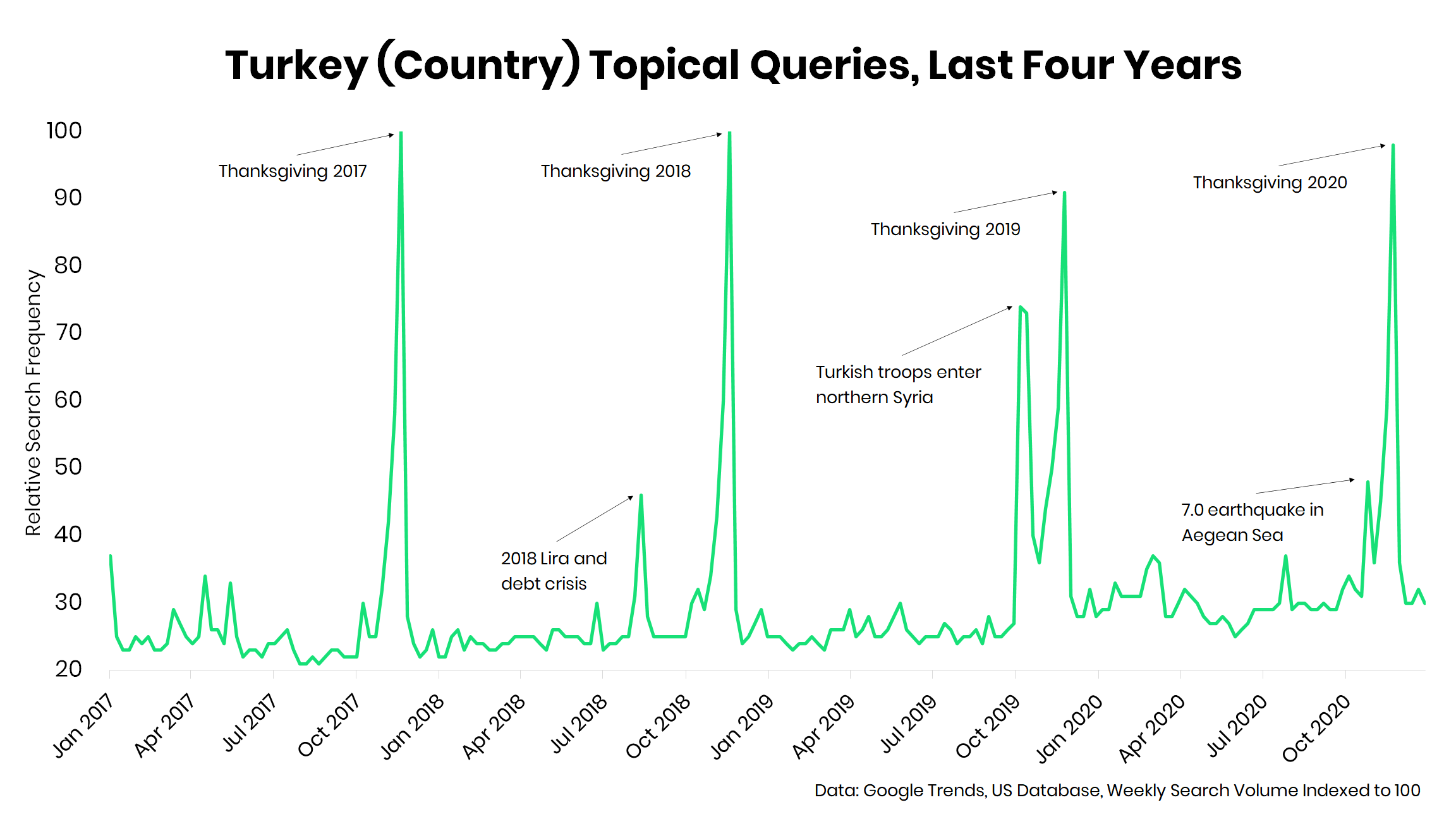An approach for making better content decisions
How data-informed insights should kick off your editorial effortsDo you use marketing platforms and listening tools to get data, or to get insights? The former approach is easy. Sign up for a free trial of your platform of choice, plug in some queries and filters, and auto-schedule a report. Done! You’ll be up to your ears in data. End of article? Not quite. I’ll guarantee that those reports are likely to add more questions to your plate than answers.
Simply put, robots haven’t replaced analyst insights
There’s a difference between listening and synthesizing and contextualizing. Lots of software can give you lots of reams of data, but how do you separate the signal from the noise? When one of our healthcare clients planned a service expansion, we delivered a weekly monitoring email to key stakeholders aggregating insights. It used three verticals of data inputs:
- Trending search queries over the prior week and month — focusing on health condition topics such as COVID, cold/flu and urgent care needs
- Trending articles on social platforms, including Facebook, Twitter, and Reddit
- Miscellaneous news and updates — focusing on websites and local news outlets found to index for higher use among the target audience
Any one of these verticals can be served by stock reports straight out of your marketing platform of choice. But a human touch can make everything just a bit more relevant.
Smart curation avoids false positives
Many automated listening solutions pick up just as much signal as noise if you’re not configuring them correctly. Say, for example, aggregating a sample of “pain” queries that also includes Au Bon Pain. Or an article on Call of Duty: Cold War in a selection of the top “cold”-related trending content. The human element is critical to make sure that insights are as noise-free as possible. You might be thinking, “My marketing platform is smarter than that!” Or, “That’s why I spent so much time configuring keywords and filters!” Well, consider this chart of Google Trends queries on the topic of Turkey (the country) — which just happens to max out every Thanksgiving.  We’re pretty confident that the Trends-surfaced related query “how to cook a turkey” doesn’t have anything to do with Turkey. If Google struggles with curation, you can bet any platform you’re using is going to struggle with curation. But an analyst parsing through that spike in a report would immediately see that this should not be considered a real trend or insight. In the case of that healthcare service expansion, we’ve seen false positives galore:
We’re pretty confident that the Trends-surfaced related query “how to cook a turkey” doesn’t have anything to do with Turkey. If Google struggles with curation, you can bet any platform you’re using is going to struggle with curation. But an analyst parsing through that spike in a report would immediately see that this should not be considered a real trend or insight. In the case of that healthcare service expansion, we’ve seen false positives galore:
- Noisy data — thanks to sampling and low query volume — that would make you think that a given medical condition is spiking when, in fact, it’s largely unchanged
- Spikes due to news cycles (such as celebrity deaths) that are irrelevant to actual condition-related patterns
- Changes in how people talk about emerging topics — think of the shift in audience usage of “coronavirus” vs. “COVID” in their search patterns — that could act as a false indicator of condition relevance
All of this and more would be lost in simple data collection schemes — something I’ve often seen used by otherwise sophisticated marketing outfits.
Curated insights feed successful editorial systems
So, you’re asking yourself, “How do I get editorial insights out of this?” Too many marketing outfits put their analytics work at the end of the content cycle. We put it upfront — funneling data through analyst curation and adding editorial expertise to craft the most compelling content for our clients’ marketing efforts. You can even put it into a formula, if you’re into that sort of thing: Useful Data + Smart Curation + Editorial Expertise = Great Content That weekly email offers the opportunity for stakeholders to respond with their thoughts and feedback, enabling:
- An internal sync for continued marketing strategy alignment
- Email deployments or social posts to respond to what is trending now
- Blog posts to tackle more evergreen issues
For instance, one week we identified an outsized spike in queries for COVID vaccine side effects. After flagging this for the team, we aligned on a quick-turn email to provide immediate assurance for customers, and a blog post to provide more detailed information for those who wanted it. And we keep a pulse on that query to this day to ensure we’re continuing to monitor any changes. What marketer doesn’t want to lock into, and be responsive to, emerging trends that their clients can be confident in at the end of the day? R
We always look forward to new conversations — get in touch if you’d like to learn more about how our content planning products can work for you.
Subscribe
Get our weekly newsletter for tips on how to drive better content marketing performance.
For a regular stream of ideas, research and links we find helpful. And of course, to say hi!
